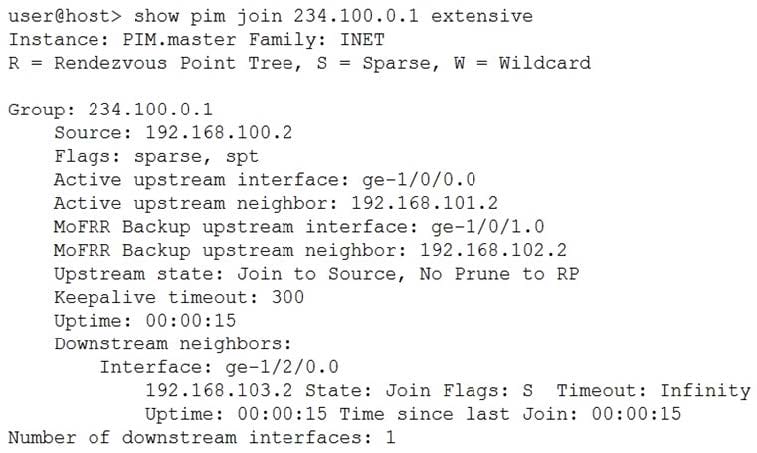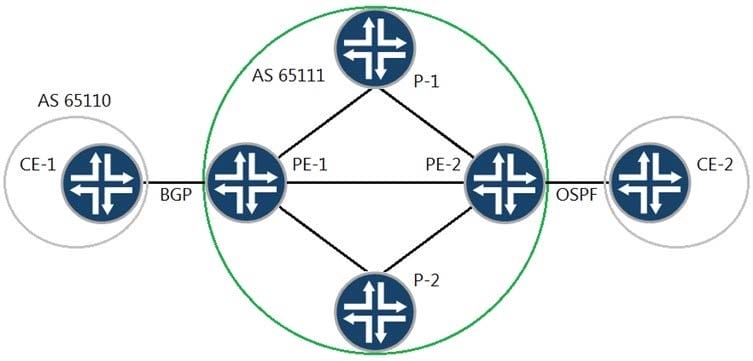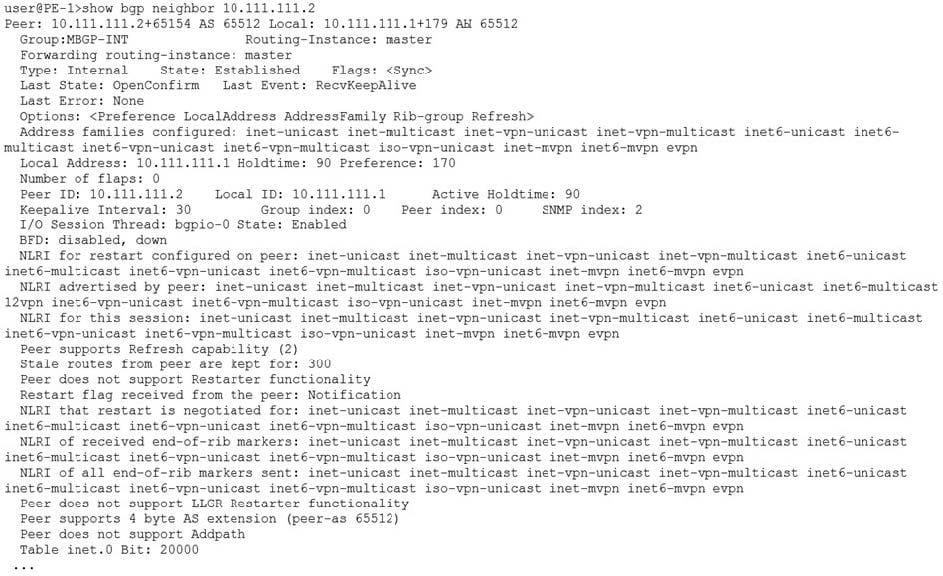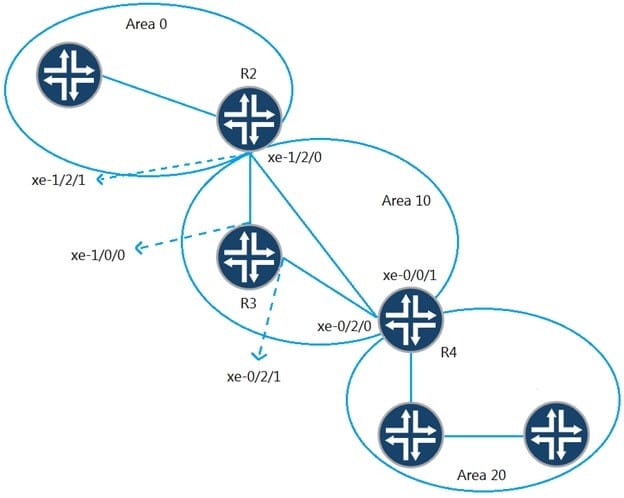JN0-663 Online Practice Questions and Answers
What information is stored in a VRF table for a BGP Layer 2 VPN? (Choose three.)
A. Layer 2 encapsulation
B. local site ID
C. remote interface of local CE device
D. logical interlace provisioned to local CE device
E. label-switched path
You have a mixed vendor EVPN environment and you need to ensure VXLAN interoperability between all devices.
In tins scenario, winch statement is correct?
A. You should only use pure Type 2 routes.
B. You should only use pure Type 5 routes.
C. You should only use Type 2 and Type 5 routes.
D. You should only use Type 6 and Type 2 routes.

Which three statements are true about the show pim join output shown in the exhibit? (Choose three.)
A. This is a source-specific multicast stream.
B. The multicast receiver is still using the RP to receive the stream.
C. The multicast stream has been configured with a backup path to allow for fast reroute.
D. The multicast stream does not have an RP.
E. The shortest path to the source is through the RP.

You have a Layer 3 VPN established between PE-1 and PE-2 to allow communication between CE-1 and CE-2. You want to establish communication between CE-1 and CE-2.
Referring to the exhibit, which statement is correct?
A. You will need a BGP export policy on PE-1 to redistribute the OSPF routes, learned from PE-2, to the CE1 BGP neighbor.
B. You will need a VRF import policy on PE-2 to advertise the OSPF routes, learned from CE-2, through the Layer 3 VPN.
C. You will need a VRF export policy on PE-2 to redistribute the OSPF routes, learned from CE-2, through the Layer 3 VPN.
D. You will need a VRF import policy on PE-1 to receive the OSPF routes, learned from PE-2, through the Layer 3 VPN.
You are considering different MPLS VPN connectivity options for a new customer deployment. Your customer requires shared LSPs, Layer 2 connectivity, and auto-provisioning.
Which type of VPN satisfies the requirements?
A. BGP Layer 3 VPNs
B. circuit cross-connects
C. LDP Layer 2 circuits
D. BGP Layer 2 VPNs

The exhibit shows a BGP peering session for two PE routers. The BGP session is up, but the hosts in the Layer 2 VPN that uses the BGP session are unable to communicate.
What is the problem in this situation?
A. The BGP peer does not support the add-path feature.
B. There is a mismatch in the supported NLRI address families between the BGP peers.
C. The local BGP router does not support Layer 2 VPN and Layer 3 VPN NLRI address families at the same time.
D. The BGP peer does not support the restarter functionality.
You are responsible for configuring CoS for your network Your network includes a video application with strict latency requirements, so that any packets delayed by more than 75 ms are effectively useless. You want to ensure that you do not waste buffer space.
When configuring the scheduler for this application, which feature would you use?
A. remainder
B. exact
C. temporal
D. rate limit

You must configure an OSPF virtual link to facilitate communication between Area 0 and Area 20.
Referring to the exhibit, which two addresses should you use as the neighbor IDs of the virtual link endpoints? (Choose two.)
A. The address that is associated with R4's xe-0/0/1 interface.
B. The address that is associated with R2's router ID.
C. The address that is associated with R2's xe-1/2/0 interface.
D. The address that is associated with R4's router ID.
